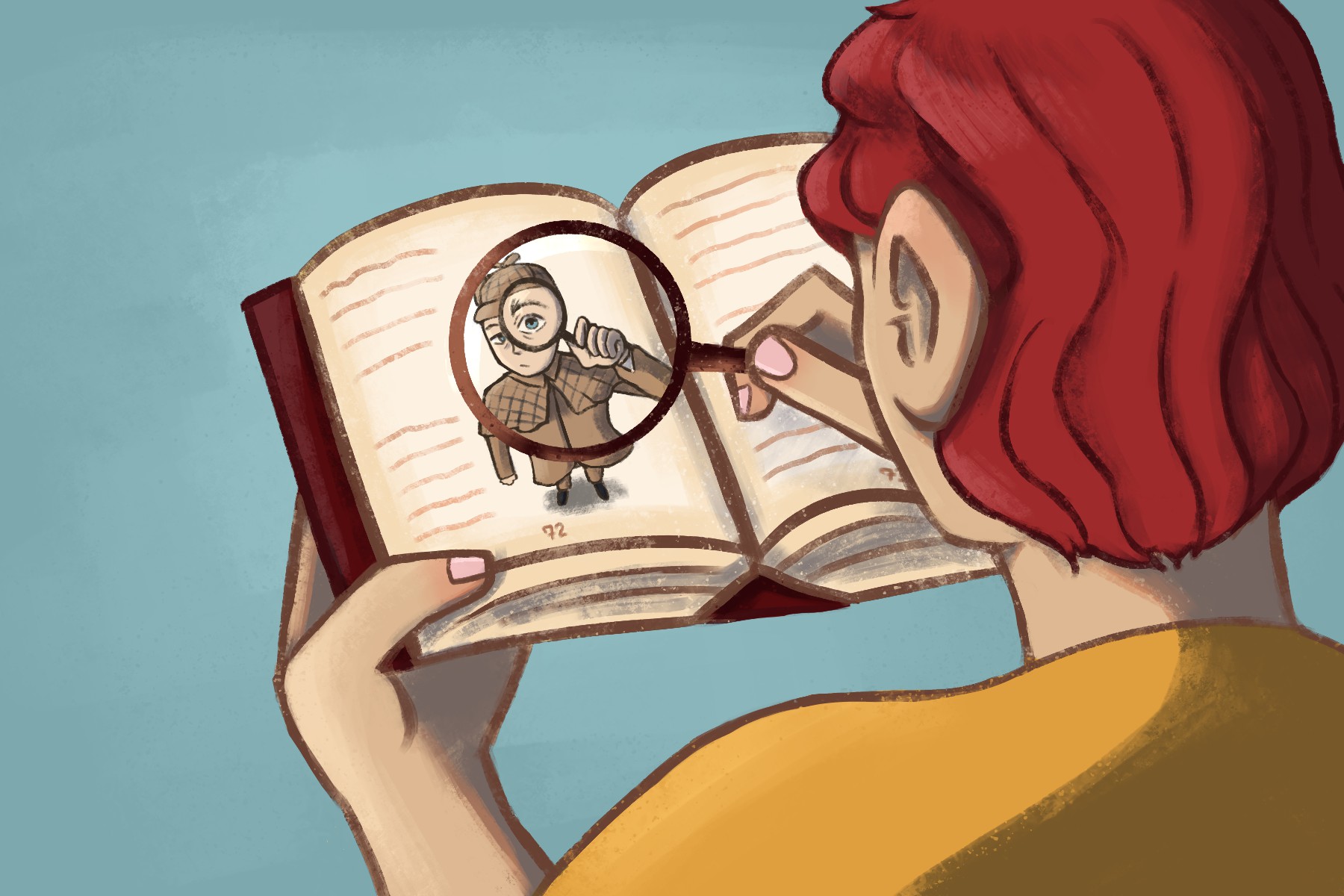A great mystery, whether on the page or on the screen, is often marked by a perfect confluence of plot and character. One of the main keys to a good mystery is the seamless interplay between an intricate storyline and memorable characters. The innovative plots of Arthur Conan Doyle would not be as compelling without the socially inept but intelligent Sherlock Holmes and his warm companion, Dr. Watson.
Known for his rumpled raincoat and cheap cigar, Lieutenant Columbo has many engaging idiosyncrasies; however, “Columbo” would be a mediocre show without its extraordinary howdunit plots. One of the greatest mystery authors of all time achieved enormous monetary success by maintaining the perfect balance of plot and character. Outsold only by the Bible and Shakespeare, the best-selling author is the queen of mystery herself: Agatha Christie.
Agatha Christie published many of the 20th century’s greatest mystery novels, notably “And Then There Were None” and “The Murder of Roger Ackroyd.” But Christie’s most popular novel has garnered both praise and ire from critics over the past hundred years: “Murder on the Orient Express.” The 1934 novel’s inventive plot landed it on Mystery Writers of America’s 1995 Top 100 Mystery Novels of All Time list, yet many critics have argued that the novel does not seem realistic. Ultimately, “Murder on the Orient Express” is the quintessential mystery because Poirot’s methodical breakdown of the murder compels the reader to believe the novel’s improbable plot.
Spoilers for “Murder on the Orient Express” ahead.
Setting The Scene
Hercule Poirot is the novel’s central character, an eccentric Belgian detective whose egg-shaped head and perfectly groomed mustache form the perfect counterpart to his “little gray cells,” or innate ability to understand human nature. Arthur Conan Doyle’s legendary detective Sherlock Holmes inspired Poirot’s eccentricity. Unlike Sherlock, however, Poirot only uses physical clues to support his psychological analyses and profiles.
The novel’s setting, the Orient Express, helps Christie craft her tale in multiple ways. The isolated train compartment limits the number of credible murder suspects. There are fifteen occupants, including Poirot, the conductor and the murder victim. Moreover, the compartment’s unusual features, such as passports in guests’ luggage and the lock of a train door, provide a host of clues that gradually lead to the culprits’ apprehension.
The murder victim is Samuel Ratchett, an American businessman who seems to annoy everyone that he encounters. Ratchett knew that he was in serious trouble before the murder even happened, so he preemptively asked Poirot to look into his case. Poirot responded: “I will not take your case because I do not like your face.” Christie immediately establishes ambiguity around the question of who might have wanted Ratchett dead, as she implies that no one in the train car liked him.
One of the fundamental keys to a good mystery is introducing a cast where each member could plausibly be the culprit. Whether an English governess or a Russian princess, the randomized nature of the passengers immediately makes Poirot suspicious and proves key to the mystery’s solution. Readers find it difficult to pin their suspicions on one murder suspect, so they keep guessing the culprit’s identity throughout the novel.
The Clues
When Poirot examines Ratchett’s body, he finds that the victim has twelve stab wounds. The key evidence that Poirot discovers consists of a handkerchief monogrammed with the initial “H” and a pipe cleaner. Both are classic red herrings, and the handkerchief proves invaluable to Poirot’s investigation.
Christie engages readers by making them feel part of the story, only introducing new information as Poirot investigates. After introducing the crime and the suspects, Poirot’s interviews with each suspect and inspection of their luggage guide the reader through his logic.
At the end of the novel, Poirot collects every suspect in one room and theatrically reveals the true perpetrator of Ratchett’s murder. The train car’s mysteriously diverse passengers are, in fact, connected to the same place: a household in the melting pot of America. The letter “H” on the handkerchief is in Cyrillic script, which allows Poirot to properly identify the person to whom it belongs. And then, Poirot reveals the solution to the mystery: almost everybody on the train car committed the crime. The twelve stab wounds illuminate the simple yet bizarre truth.
Conclusion
The conclusion is, of course, improbable; such an elaborate scheme to disguise the crime involves too many people. But what the novel might lack in realism, it more than makes up for in entertainment. Poirot’s conclusions are logical once readers carefully piece the mystery together after a few whirlwind hours in Christie’s fictional world. This balance is achieved only by Christie’s magnificent control of the plot.
The hard-boiled mystery writer Raymond Chandler, famous for “The Big Sleep” and “The Long Goodbye,” dissected the ending of “Murder on the Orient Express” in his wonderful 1944 essay “The Simple Art of Murder”:
By duly messing around with his “little gray cells” M. Poirot decides that since nobody on a certain through sleeper could have done the murder alone, everybody did it together, breaking the process down into a series of simple operations like assembling an egg beater. This is the type that is guaranteed to knock the keenest mind for a loop. Only a halfwit could guess it.
With his rather abrasive language, Chandler does illuminate the point that the novel mostly evades realism. While the gritty American realism of Hammett and Chandler has its merits, it is hard to find a more enjoyable read than an Agatha Christie novel.
The keys to Christie’s success — and the fundamental keys to a good mystery — are her tightly controlled plots, her intriguing detective character, and her ability to suspend readers’ disbelief long enough for them to enjoy the story.
Agatha Christie’s “Murder on the Orient Express” is available for purchase here.
















